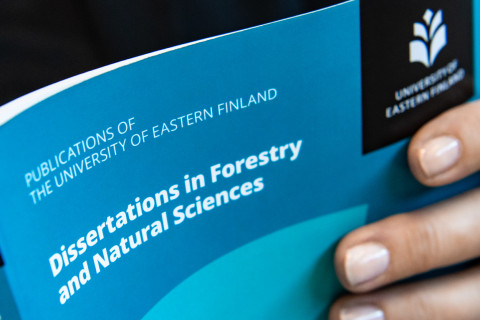The doctoral dissertation in the field of Applied Physics will be examined at the Faculty of Science, Forestry and Technology, Kuopio campus and online.
What is the topic of your doctoral research? Why is it important to study the topic?
My doctoral research focuses on understanding the complex biomechanics of the knee joint. Specifically, I wanted to examine the mechanical responses of knee cartilage using computational modelling. I investigated how different factors – such as the used imaging modality, the applied cartilage material properties, and the use of personalized motion data versus generic motion data – affect the accuracy and reliability of the simulated mechanical responses of the knee joint.
Thus, in my work, I compared models and their mechanical outputs in cases when the models were constructed with magnetic resonance imaging (MRI) or X-ray imaging data, implemented with human or bovine cartilage properties, and implemented with fully personalized or non-personalized literature-based gait inputs. With these comparisons, my work aims to improve the modelling of the knee joint and cartilage mechanics.
My research is critical because knee-related disorders, particularly osteoarthritis, are a leading cause of reduced mobility and quality of life worldwide. Despite advances in osteoarthritis diagnosis, there is still no effective treatment. Accurate, patient-specific tools to improve understanding of biomechanical risk factors of osteoarthritis, predict disease progression, and optimize treatment plans could address this challenge. By enhancing the accuracy and applicability of knee joint models, my dissertation research has the potential to improve clinical interventions, delay the development of osteoarthritis, and ultimately, contribute to better patient outcomes.
What are the key findings or observations of your doctoral research?
The key findings of my doctoral research include the development of an accessible, accurate computational model for assessing knee joint cartilage mechanics. My model utilized standard X-ray imaging, offering a cost-effective alternative to MRI. Further, my research also compared models with human cartilage properties over commonly used models with bovine cartilage properties. The results showed notable differences in knee cartilage mechanics between the two modelling approaches, highlighting the importance of utilizing human cartilage properties whenever they are available.
Furthermore, my work highlights the sensitivity of knee joint simulations to personalized gait data, emphasizing the importance of accurately capturing patient-specific movement for reliable model predictions. My findings provide valuable insights for the scientific community, which are essential for improving computational models to understand knee joint mechanics better and aid in more accurate diagnoses and treatment strategies for conditions like osteoarthritis.
How can the results of your doctoral research be utilized in practice?
The results of my doctoral research can be utilized in clinical practice by providing a more accessible and efficient method for assessing the knee joint and cartilage mechanics using an X-ray imaging-based computational knee model. This can help clinicians better understand their patients’ knee biomechanics without relying on expensive and less accessible MRI data.
Additionally, by incorporating human cartilage properties and personalized gait data into the knee models, researchers and, in the future, healthcare providers can make more accurate predictions of cartilage mechanics and tissue degeneration. This can be a vital benefit in tailoring treatment for patients suffering from osteoarthritis. These advancements can potentially improve patient outcomes and inform the development of new surgical and preventive rehabilitation strategies.
What are the key research methods and materials used in your doctoral research?
My doctoral research utilized computational musculoskeletal and finite element modelling to simulate knee joint mechanics, with a specific focus on cartilage biomechanics during walking. We utilized anatomical measurements from both knee X-ray and MR images and a template-based approach to personalize knee joint finite element models. The X-ray-based models were validated against MRI-based counterparts to validate the method. This approach enabled faster and more accessible model generation compared to conventional modelling techniques.
Key methods included developing 3D knee models from X-ray and MRI data and integrating human cartilage properties obtained from mechanical testing to assess cartilage mechanical responses. Furthermore, gait trials at self-selected walking speeds were used for musculoskeletal modelling and simulations, with subject-specific gait data serving as input for finite element models. Finite element simulations were run to analyze stress, strain, and fluid pressure within the knee cartilage during walking. Finally, sensitivity analyses were conducted to evaluate the impact of cartilage material properties and gait variations due to musculoskeletal modelling assumptions on knee mechanics during walking.
The doctoral dissertation of Sana Jahangir, MSc, entitled Imaging-based computational modelling of knee joint mechanics: Radiograph-informed model generation and simulation of the sensitivity of the selected model parameters on cartilage mechanics will be examined at the Faculty of Science, Forestry and Technology, Kuopio Campus and online. The opponent will be Dr. Dimitrios Tsaopoulos, Center for Research and Technology Hellas, Institute for Bio-economy and Agri-technology, Greece, and the custos will be Professor Rami K. Korhonen, University of Eastern Finland. The language of public defence is English.
For more information, please contact:
Sana Jahangir, [email protected], tel. +358 50 573 8151

